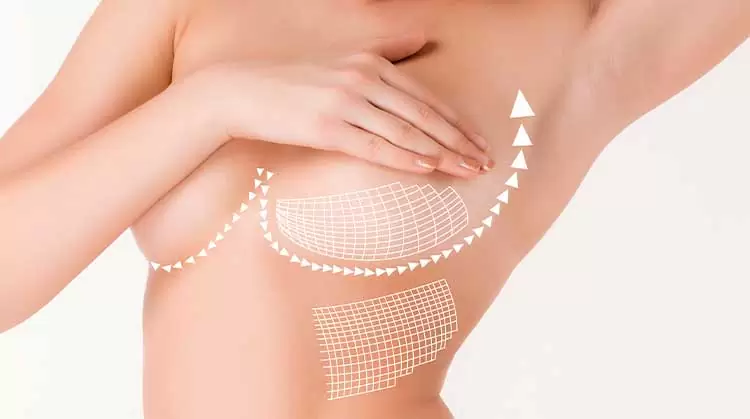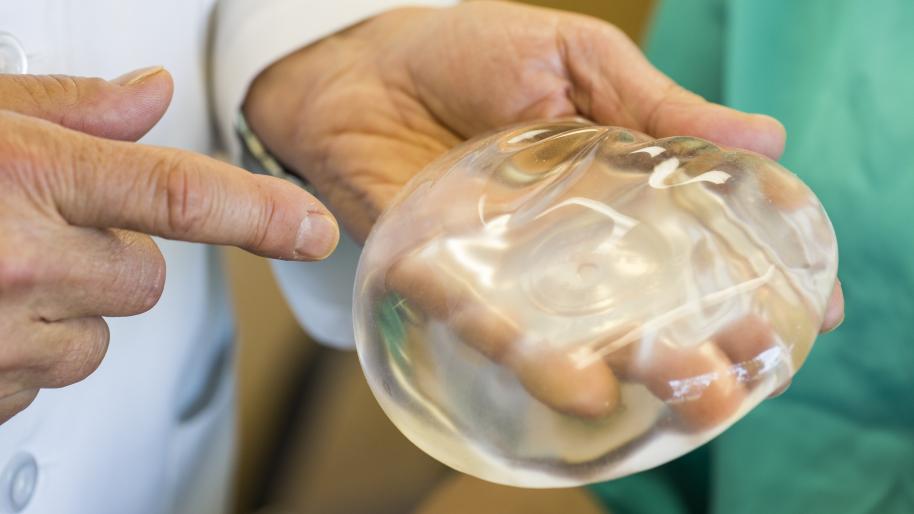Contents;
Understanding Breast Aesthetics Recovery

Understanding Breast Aesthetics Recovery is an essential part of the overall breast augmentation journey. After undergoing the surgery, patients need to ensure proper care and follow specific instructions to ensure a smooth and successful recovery. It is crucial to have a thorough understanding of the recovery process, as well as the expected timeline and common post-operative symptoms.
First and foremost, it is important to have realistic expectations regarding the recovery process. Every individual heals differently, and it may take several weeks to months before the final results of the breast augmentation surgery are fully apparent. It is essential to be patient and allow your body time to heal, as rushing the recovery process can lead to complications and unsatisfactory outcomes.
During the initial stages of breast aesthetics recovery, proper wound care and maintenance are of utmost importance. It is crucial to keep the surgical incisions clean and dry. Your surgeon will provide specific instructions on how to clean the incisions, change dressings, and when to remove any sutures or surgical tapes. Following these instructions diligently can help minimize the risk of infection and ensure optimal healing.
Additionally, managing pain and discomfort is an essential aspect of breast aesthetics recovery. Your surgeon will prescribe pain medications and provide guidelines on their usage. It is important to take medication as directed and communicate any concerns or unusual symptoms to your surgeon. Engaging in light physical activities and avoiding strenuous exercises during the initial recovery period helps to prevent excessive pain and discomfort.
Preparing For A Smooth Recovery

Undergoing breast aesthetics surgery is a significant decision that requires thorough preparation, not just for the procedure itself, but also for the recovery process. Proper preparation can help ensure a smoother recovery and optimal results. To make the process easier, it is crucial to follow certain guidelines and instructions provided by your surgeon.
1. Follow Pre-Operative Instructions: Before the surgery, your surgeon will provide specific pre-operative instructions that you must strictly adhere to. These instructions may include quitting smoking, avoiding certain medications, and fasting before the procedure. Following these guidelines will minimize any potential risks and complications during and after the surgery.
2. Arrange for Assistance: Breast aesthetics surgery typically requires a certain amount of downtime for recovery. It is important to have someone available to assist you during the initial days following the procedure. This person can help with household chores, meal preparation, and provide emotional support during your recovery.
3. Prepare a Recovery Space: Create a comfortable and relaxing recovery space in your home before the surgery. Ensure that you have ample pillows, soft blankets, and a reclining chair or bed for better positioning. Stock up on essential supplies such as pain medications, prescribed ointments, antibacterial soaps, and comfortable clothing that can be put on and taken off easily.
Immediate Post-Operative Care Instructions

After undergoing breast aesthetics surgery, it is important to follow the immediate post-operative care instructions provided by your surgeon. These instructions are designed to promote healing, minimize discomfort, and help you achieve optimal results. Following these instructions diligently will contribute to a smooth recovery process.
One important aspect of immediate post-operative care is proper wound care. This involves keeping the surgical incisions clean and dry. Your surgeon may provide specific instructions on how to clean the incisions, which may include using gentle soap and water. It is crucial to avoid scrubbing or rubbing the incisions to prevent irritation or infection. Additionally, it is recommended to change your dressings as instructed to maintain a clean and sterile environment for the incisions to heal.
Another crucial aspect of immediate post-operative care is managing pain and discomfort. Your surgeon may prescribe pain medications to help alleviate any pain or discomfort you may experience. It is important to take these medications as prescribed and communicate with your surgeon if you have any concerns or if the pain becomes unmanageable. Along with pain medication, applying cold compresses to the breasts can help reduce swelling and alleviate discomfort.
Additionally, it is essential to be mindful of your activities and movement during the immediate post-operative period. Your surgeon may provide specific instructions regarding restrictions on lifting heavy objects, engaging in strenuous physical activities, or sleeping positions. These restrictions are put in place to ensure proper healing and to minimize the risk of complications. Adhering to these instructions is crucial for a successful recovery.
Managing Pain And Discomfort
Undergoing a breast aesthetics procedure is a significant decision, and it is crucial to be well-prepared for the recovery process. While the results of the procedure can be exciting, it is important to recognize that managing pain and discomfort during the recovery phase is essential for a smooth healing process. By following the post-operative care instructions provided by your surgeon and implementing strategies to alleviate pain and discomfort, you can aid in your own recovery and achieve the desired outcome.
Proper pain management is key to a comfortable recovery. Your surgeon will prescribe pain medication to help alleviate any pain or discomfort you may experience post-surgery. It is important to take the prescribed medication as directed and not to skip doses, as this can lead to increased pain. If you have any concerns or adverse reactions to the medication, be sure to consult with your surgeon for further guidance.
- Elevating your upper body can help minimize discomfort and swelling. During the initial stages of recovery, it is recommended to sleep and rest with your head and upper body slightly elevated. This position helps reduce swelling and can provide relief from discomfort. Additionally, using extra pillows or a wedge-shaped pillow can help maintain the desired elevation while sleeping.
| Applying cold compresses can aid in pain management. Swelling and bruising are common after a breast aesthetics procedure, and these can contribute to pain and discomfort. Applying cold compresses or ice packs to the surgical area can help reduce swelling and provide temporary relief. It is important to use a thin cloth or towel between the cold pack and your skin to prevent direct contact, which may cause injury. |
Caring For Surgical Incisions

When it comes to breast aesthetics recovery, caring for surgical incisions is a critical aspect of the healing process. Proper care can help minimize the risk of infection, promote faster healing, and result in less noticeable scars. Following your surgeon’s instructions and adopting a diligent daily routine are key to ensuring optimal healing and the best possible outcome.
One essential step in caring for surgical incisions is keeping them clean and dry. Your surgeon will provide specific instructions on how to clean the incisions, which may involve using a gentle cleanser and warm water. It is essential to avoid getting the incisions wet or submerged in water, especially during the initial healing period. Additionally, gently pat the incisions dry with a clean towel or air-dry them to prevent irritation or damage to the healing tissue.
After cleaning the incisions, it is crucial to cover them with sterile dressings or surgical tape. This helps protect the incisions from bacteria and external contaminants and provides support to the healing tissues. Be sure to follow your surgeon’s instructions on how often you should change the dressings and what type of dressing you should use. If you notice any signs of infection, such as increased redness, swelling, or drainage, contact your surgeon immediately for further guidance.
- In addition to proper cleaning and dressing, it is essential to avoid activities that can strain or reopen the incisions. Follow your surgeon’s guidelines on restrictions, which may include avoiding heavy lifting, strenuous exercise, or activities that involve stretching the chest muscles. By protecting the incisions and allowing them to heal undisturbed, you can promote a smoother recovery and minimize the risk of complications.
| Key Points: |
|---|
| 1. Clean the incisions with a gentle cleanser and warm water as per your surgeon’s instructions. |
| 2. Keep the incisions dry and avoid submerging them in water. |
| 3. Cover the incisions with sterile dressings or surgical tape to protect them. |
| 4. Avoid activities that can strain or reopen the incisions. |
| 5. Contact your surgeon if you notice any signs of infection. |
Reducing Swelling And Bruising
Swelling and bruising are common after undergoing a breast aesthetics procedure. While they are a natural part of the body’s healing process, there are several steps you can take to help reduce their appearance and promote a faster recovery. A key factor in minimizing swelling and bruising is following the post-operative care instructions provided by your surgeon. These instructions may include specific guidelines on the use of cold compresses, elevation of the chest area, and avoiding strenuous activities. By adhering to these instructions, you can significantly decrease the swelling and bruising around your breasts.
Using cold compresses is an effective way to reduce swelling and bruising after breast aesthetics surgery. Applying a cold pack or ice wrapped in a cloth to the affected areas can help constrict blood vessels and minimize the accumulation of fluid. It is important to remember to never apply ice directly to the skin, as it can cause damage. Instead, wrap the ice or cold pack in a soft cloth and apply it to the swollen or bruised areas for short intervals of about 10 minutes at a time. Repeat this process several times throughout the day for optimal results.
Elevating the chest area can also aid in reducing swelling and bruising. By propping yourself up with pillows or a recliner, you can help promote better blood circulation and lymphatic drainage. Keeping your upper body elevated at a 45-degree angle for the first few days post-surgery can assist in preventing excessive fluid accumulation and reduce the severity of swelling. Additionally, wearing a supportive surgical bra as recommended by your surgeon can provide added comfort and support during the healing process.
Long-Term Recovery And Final Results
Long-term recovery is an essential part of the breast augmentation journey. While immediate post-operative care and managing pain and discomfort are crucial in the initial stages, it is equally important to understand what to expect in the long run and the final results you can anticipate. Breast aesthetics recovery is a process that takes time, patience, and proper care. In this article, we will delve into the various aspects of long-term recovery and how it contributes to achieving the desired final results.
One of the key factors in long-term recovery is giving your body ample time to heal and adjust to the changes made during the breast augmentation surgery. It is essential to follow your surgeon’s instructions and take the necessary precautions to ensure a smooth recovery. Preparing for a smooth recovery involves avoiding strenuous physical activity, wearing a supportive bra, and taking any prescribed medications or supplements as directed by your surgeon.
During the initial few weeks, it is common to experience swelling, bruising, and mild discomfort. However, as time progresses, these symptoms will gradually subside, and you will start to notice the final results of your breast aesthetics surgery. It is vital to care for surgical incisions diligently to minimize scarring and promote proper healing.
Frequently Asked Questions
Question: How long does it take to recover from breast augmentation surgery?
Answer: The recovery period after breast augmentation surgery typically takes about 4 to 6 weeks. However, each individual’s recovery time may vary depending on factors such as the type of procedure performed, personal healing ability, and following post-operative care instructions.
Question: What can I do to manage pain and discomfort after breast augmentation surgery?
Answer: To manage pain and discomfort after breast augmentation surgery, your surgeon may prescribe pain medications. It’s important to take the medication as directed and to avoid activities that can exacerbate pain. Applying cold packs to the chest area can also help reduce swelling and provide relief.
Question: How should I care for my surgical incisions after breast augmentation surgery?
Answer: Your surgeon will provide specific instructions on how to care for your surgical incisions. Generally, it involves keeping the incision sites clean and dry, changing dressings as directed, and avoiding excessive pressure or trauma to the incisions. It’s important to follow these instructions to promote proper healing and minimize the risk of infection.
Question: How can I reduce swelling and bruising after breast augmentation surgery?
Answer: To reduce swelling and bruising after breast augmentation surgery, it’s important to follow your surgeon’s post-operative instructions. This may include wearing compression garments, using cold packs, elevating the upper body, and avoiding activities that can increase swelling. Maintaining a healthy diet and staying hydrated can also support the healing process.
Question: When will I see the final results of my breast augmentation surgery?
Answer: It may take several months to see the final results of breast augmentation surgery as the breasts gradually settle into their new shape. Initially, the breasts may appear swollen and sit higher on the chest. As the healing process progresses, the breasts will gradually descend and take on a more natural appearance.
Question: Can I resume my normal activities during the long-term recovery period?
Answer: It’s important to gradually ease back into your normal activities during the long-term recovery period. Your surgeon will provide guidance on when it is safe to resume specific activities such as exercise, heavy lifting, and swimming. It’s crucial to avoid strenuous activities too soon to prevent complications and ensure optimal healing.
Question: What should I do if I experience any complications during the recovery period?
Answer: If you experience any complications during the recovery period, such as excessive pain, bleeding, infection, or changes in breast appearance, it is important to contact your surgeon immediately. They will be able to assess your situation, provide appropriate guidance, and address any concerns you may have.
